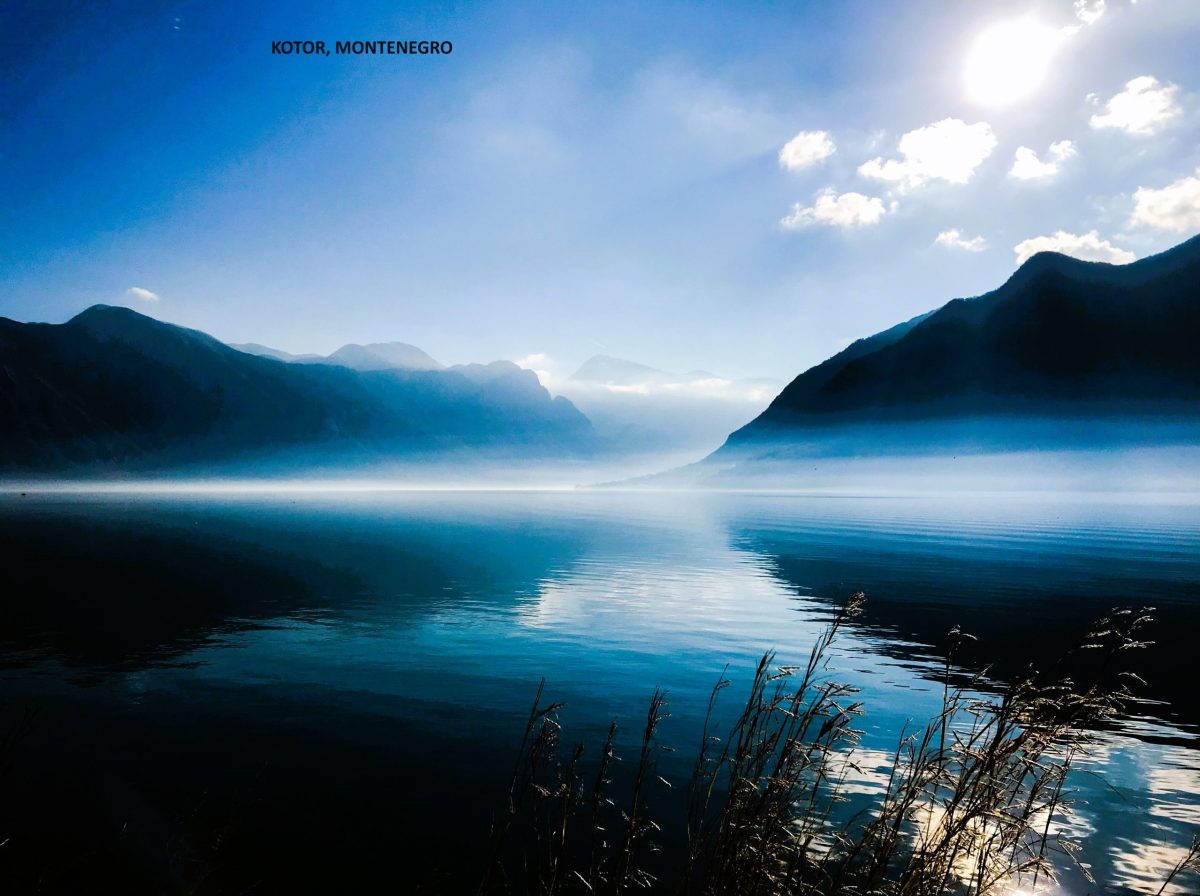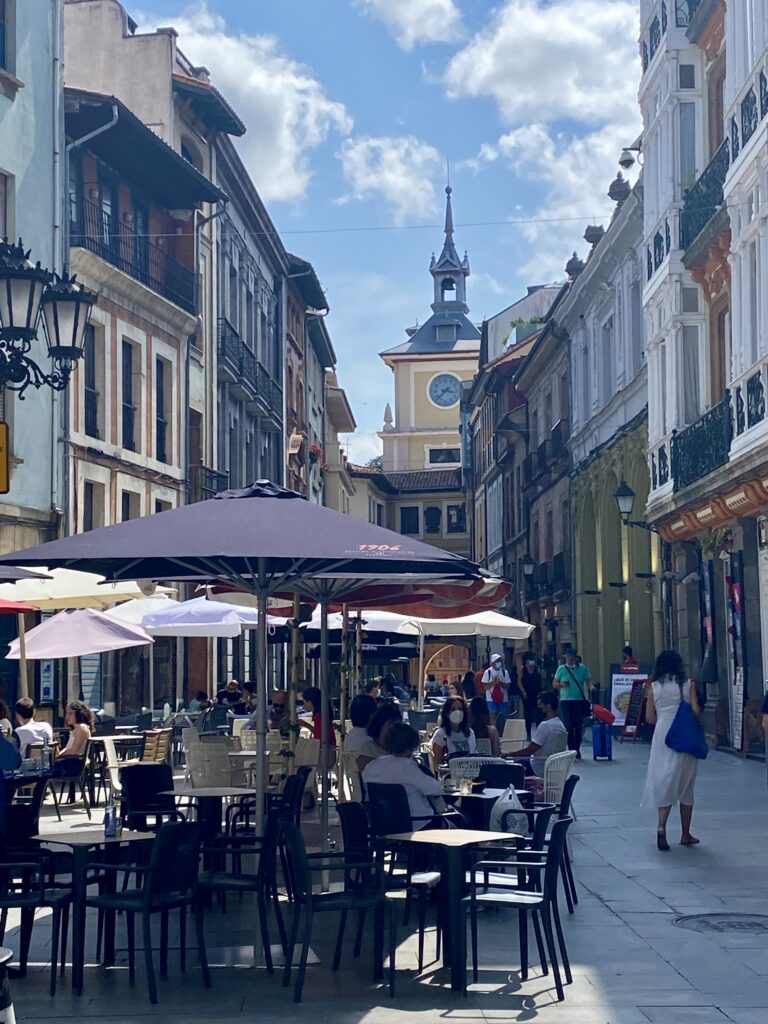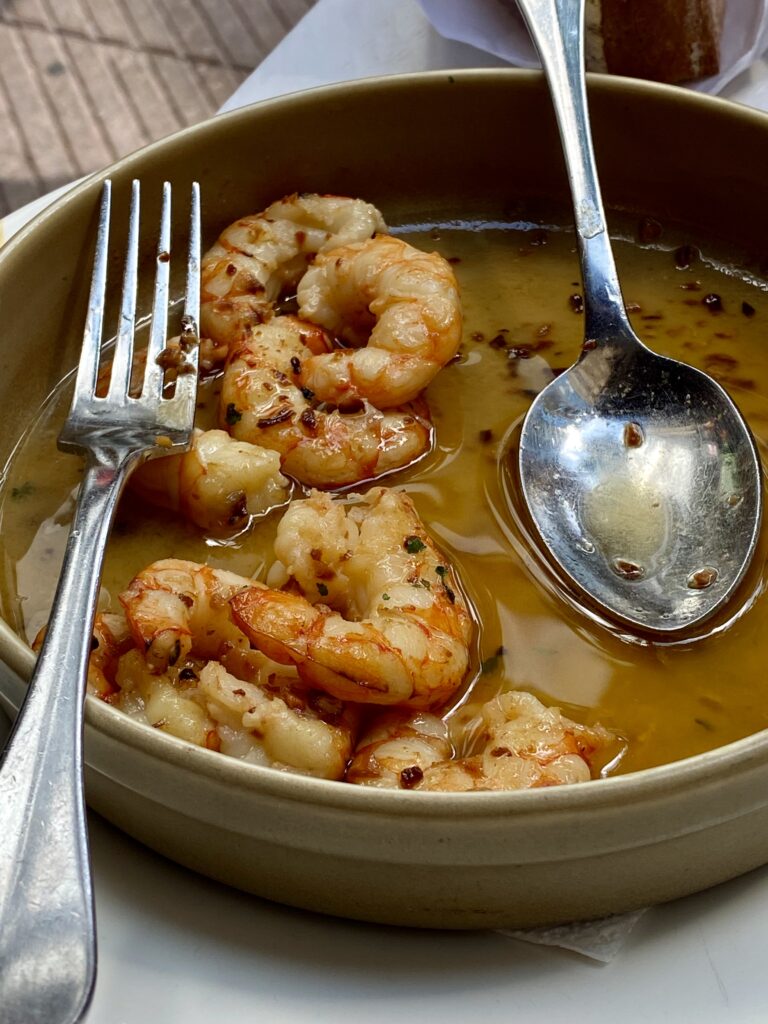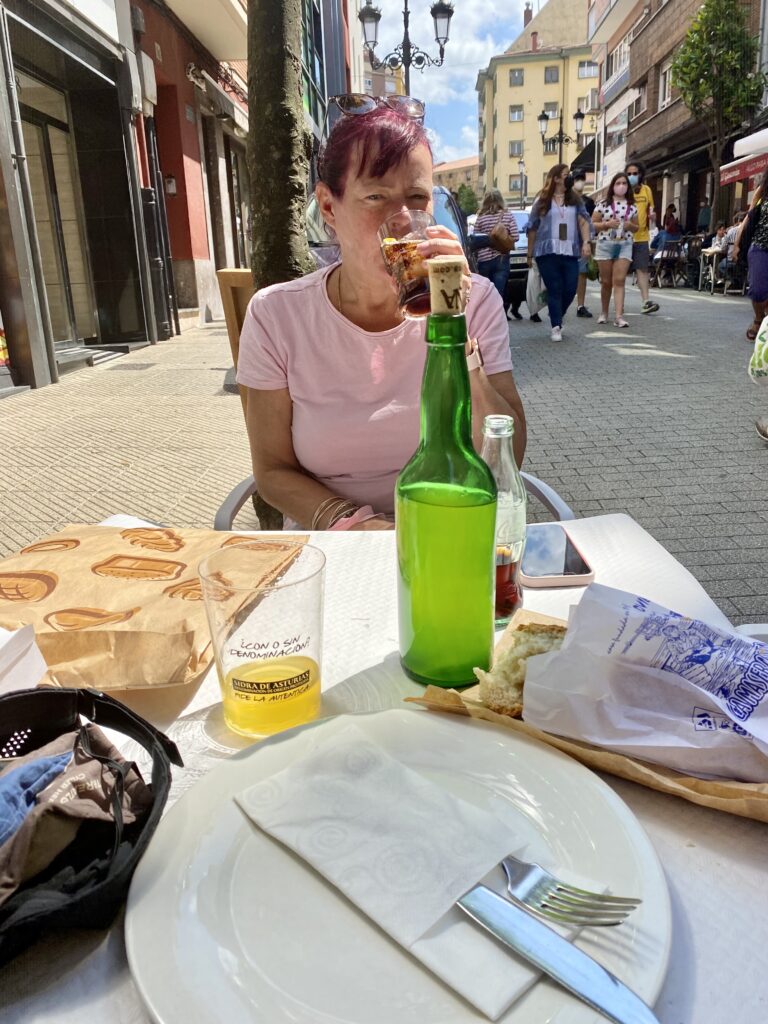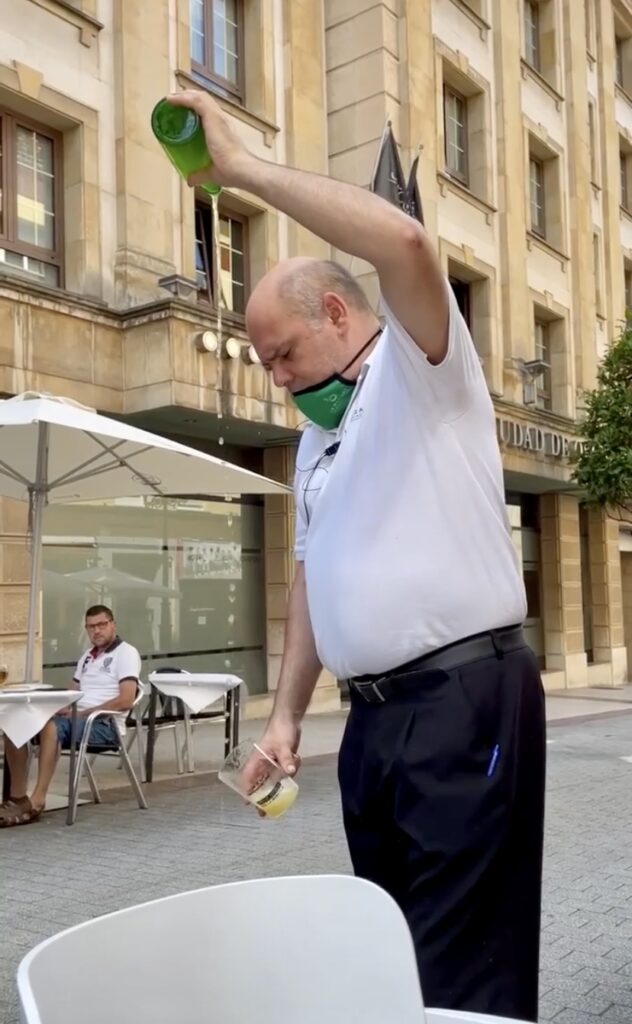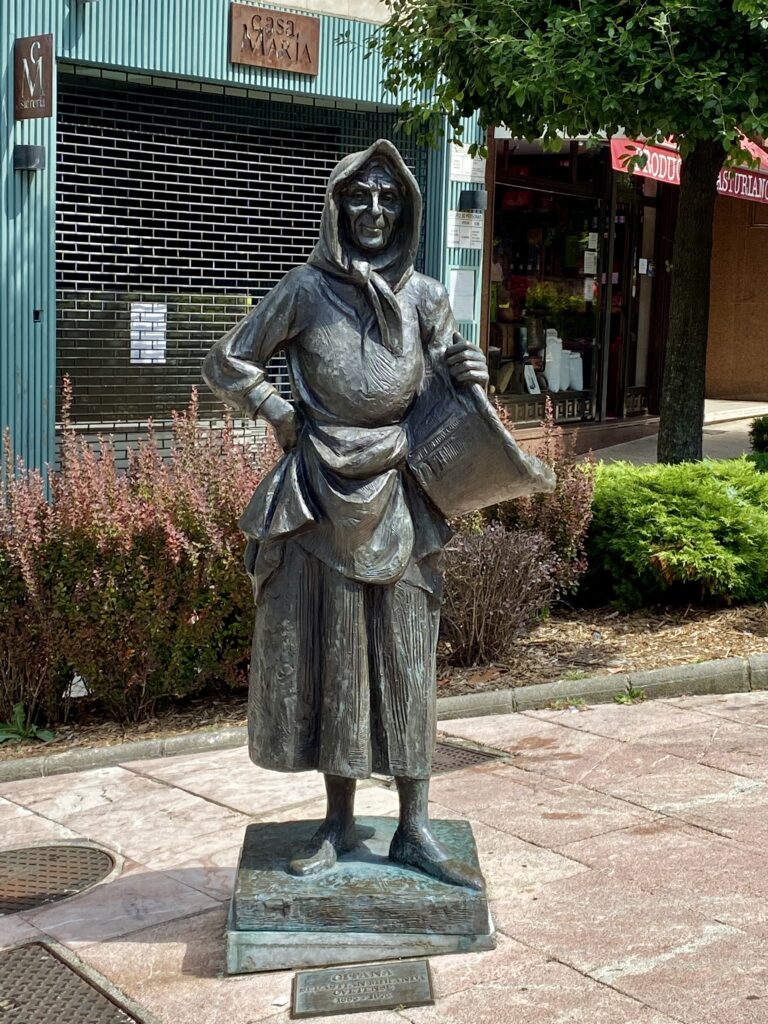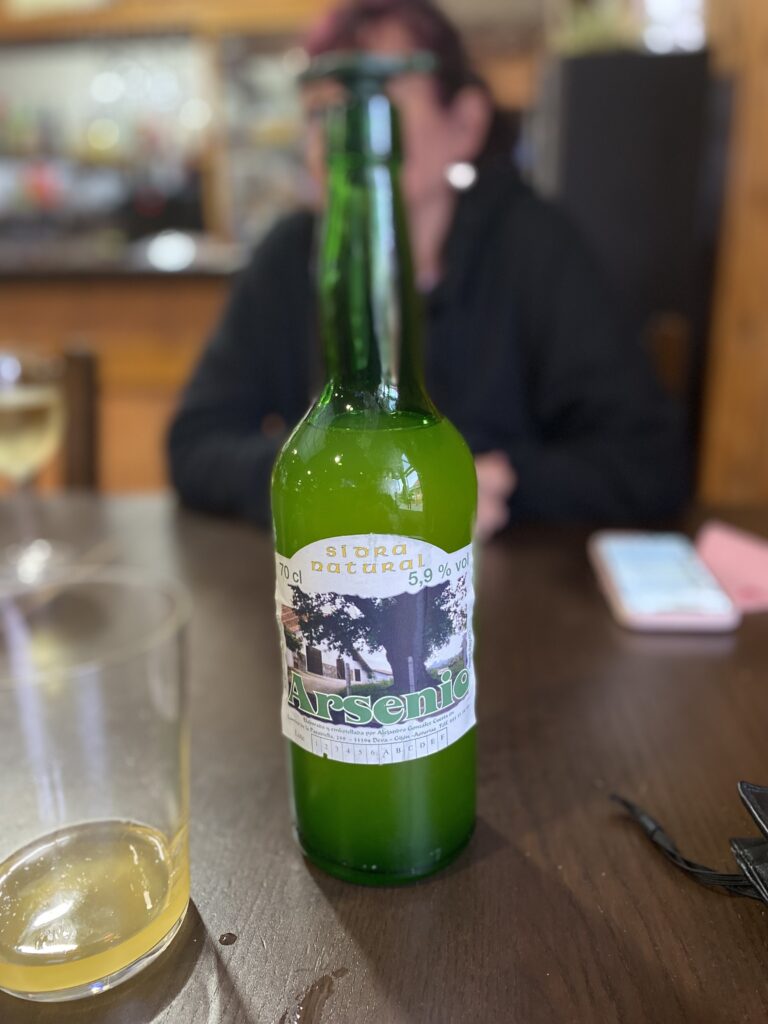I’ve long wanted to visit elegant Oviedo, the capital of Asturias, and it certainly didn’t disappoint. According to legend, modern Spanish history began here when a certain Don Pelayo saw the Virgin Mary and was inspired to fight the Moors who then occupied most of the Iberian Peninsula. Don Pelayo bacame the first King of Asturias and Oviedo the starting point for the reconquest of Spain.
As in so many Spanish cities, the old town forms the centre of Oviedo and it is the old town that attracts Vanya and I. We parked the Van and headed towards the old town; the spire of the Catedral de San Salvador de Oviedo showing the way.
I’ve often written in this website about the different ‘Camino’s which wend their way across Spain and Portugal to Santiago de Compostela. Two such ‘Ways’ are to be found in Oviedo. The first is the Camino Primitivo which stretches 199 miles from Oviedo’s cathedral to Santiago. The second is the Camino del Norte which travels 512 miles from St Jean de Luz in France to Santiago (crossing the Pyrenees and then travelling along Spain’s north coast to Oviedo before turning west south west into Galicia). I’m beginning to think I would like to travel the Camino del Norte.
There are a number of impressive churches in Oviedo. The first such church we encountered was the San Isidoro el Real on the Plaza de la Constitucion. This church was previously the 16th century Jesuit Church of San Matias which had it’s name changed following the expulsion of the Jesuits from Spain. Then there is the Catedral de San Salvador de Oviedo (sometimes referred to as the Sancta Ovetensis) which was built on the site of an earlier church in the 14th century but, with an 82 foot tower being added in 16th century; hence it being a mixture of Gothic and Baroque architecture. Inside the Cathedral there is a small chapel containing a very special cloth (the Santo Sudario) which is said to have been placed around Jesus’ head after his death. The third most impressive church (in my view) is the San Juan el Real which was built between 1912 and 1915. This has since been elevated to Minor Basilica status and it’s inside is supposed to be absolutely fabulous (we couldn’t get in) but General Franco was married in this church.
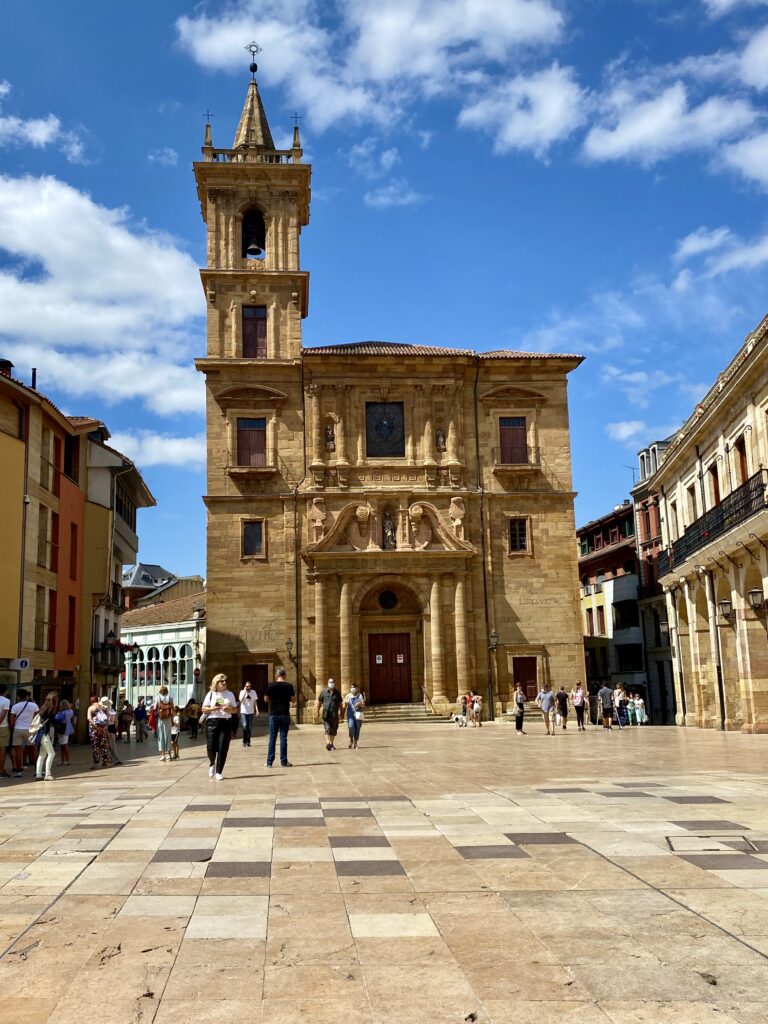
San Isidoro el Real
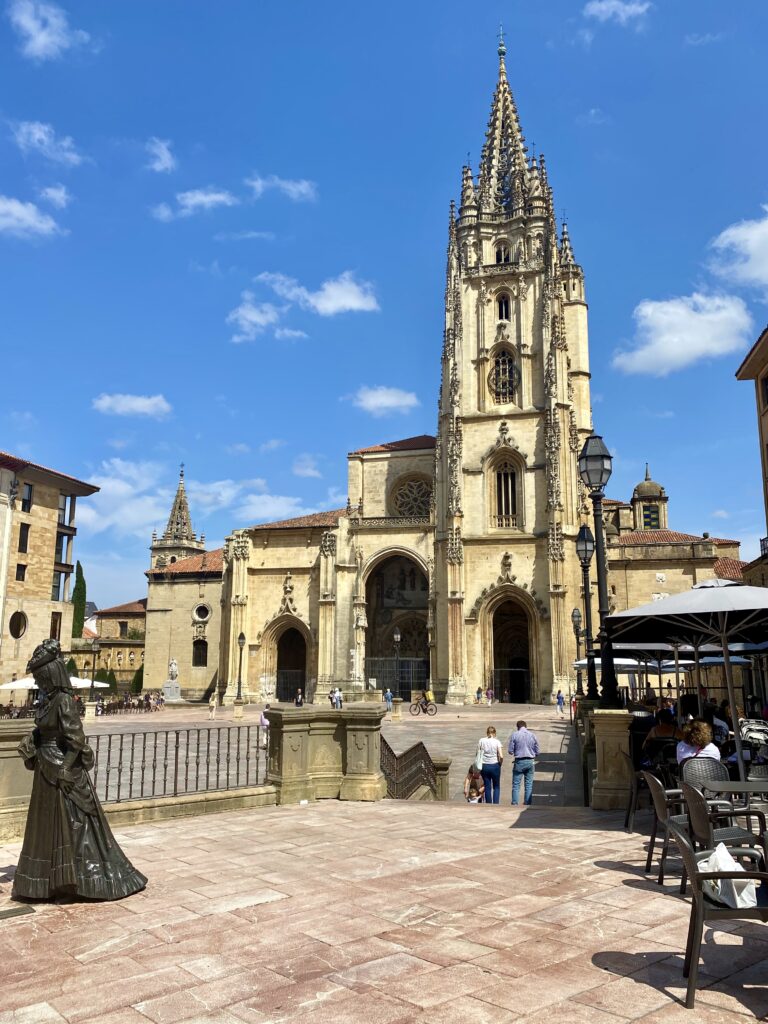
Sancta Ovetensis 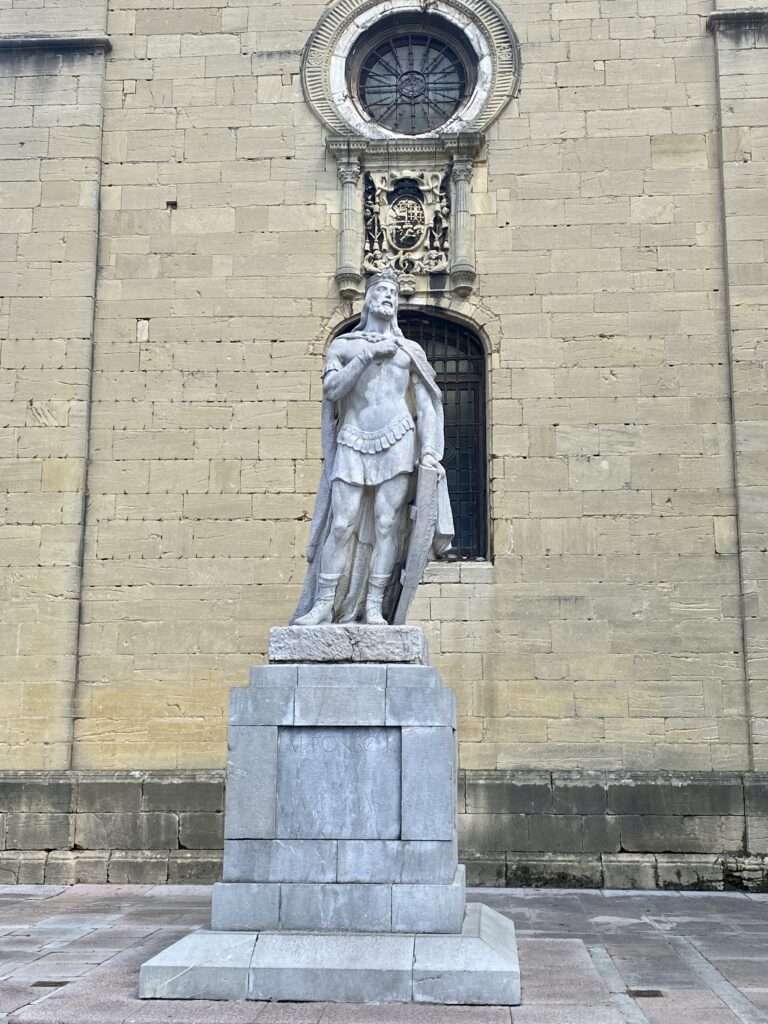
Statue outside of Alfonso II
Just around the corner from the Cathedral is the central indoor food market, the Mercado El Fontan. We didn’t go in. We were getting hungry and wanted to eat food not shop for it. Moreover, I was keen to get along to the Calle Gascona (also known as the Cider Boulevard) to find a sidreria. We found one in La Manzana Sidreria Restaurante.

La Manzana Sidreria
While not keen on British cider (it is usually too sweet and/or fizzy), I have enjoyed all but one of the Asturian ciders (sidra) I have sampled. There are no additives (not even sugar and yeast) in the sidra and it is never carbonated. The escanciar serves small amounts from on high so as to properly aerate the dry flat cider and it is then knocked back by the drinker before the cider goes flat in the glass. Needless to say the bottles do not last long with the small amounts being poured frequently and drank quickly. Cider is more popular than wine in Asturias and I fully understand why. I had a bottle with probably the best garlic prawns I have ever eaten and I can say in all honesty that I barely missed Vanya while she went shopping in a local branch of the El Corte Ingles.
Oviedo is one of those cities I could just wander around for hours.

